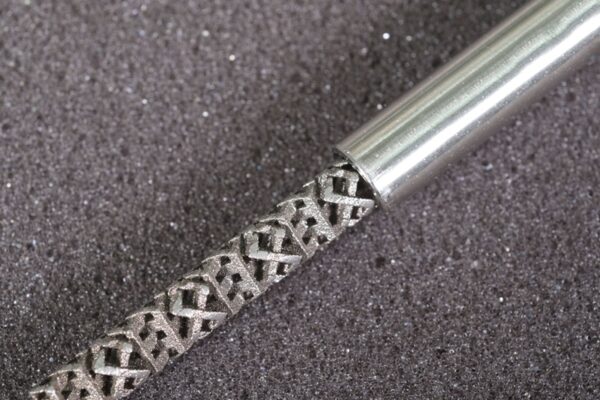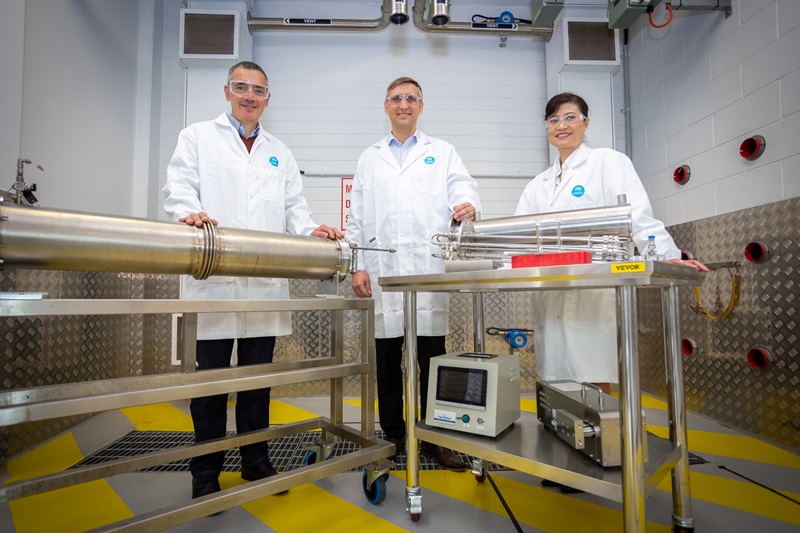Scientists from the Commonwealth Scientific and Industrial Research Organisation (CSIRO) plan to build a deployable device based on patented technology to generate hydrogen from liquid carriers after securing a $10 million investment from Victoria-headquartered engineering consultancy Advanced Carbon Engineering.
While the technology to add hydrogen to liquid organic hydrogen carriers (LOHC) is already established, the CSIRO said until recently there have been no commercial dehydrogenation processes for these hydrogen carriers, especially for small- to medium-scale decentralised applications.
The CSIRO said its hydrogen generator, which will feature the agency’s patented Catalytic Static Mixer (CSM), will solve that problem by allowing hydrogen to be economically recovered from the carrier liquid at the site where it will be used.
CSIRO Researcher Dr John Chiefari said the CSM, a 3D printed scaffold with a catalyst coating, would be central to the development of the hydrogen generator.
“Catalytic static mixers are special tools that mix fluids to speed up and better control chemical reactions without any moving parts,” he said. “This level of control allows the process to be highly scalable without the technical challenges that this usually entails. This gives us a key advantage over the current packed bed reactor technology.”

Image: CSIRO
Chiefari said the hydrogen generation system will enable hydrogen to be produced locally and on demand from the carrier, with the “added advantages of the carrier fluid being safely stored in a similar way to diesel or petrol.”
The CSIRO aims to build a pilot-scale hydrogen generator capable of producing 5 kg of hydrogen per day, followed by a demonstration-scale unit that will produce 20 kg per day. It is expected the demonstration unit will be similar in size to a 12-metre shipping container making it ideal for hydrogen refuelling stations or replacing diesel generators where off-grid power supply is required.
It is expected that once the generator has been proven, Advanced Carbon Engineering will establish a facility in Australia to produce the generator technology for domestic use and exports.
CSIRO Deputy Hydrogen Industry Mission Lead Dr Vicky Au said the project will be the first unit using Australian technology to produce hydrogen from a liquid carrier and addresses some of the key challenges to the growth of the hydrogen sector.
“Australia has the potential to become an energy superpower through hydrogen, but we need to find better methods of safely transporting and storing it at scale,” she said.
“To get the hydrogen industry moving, we need to be able to get hydrogen where it will be used by the consumer. This generator unit will do just that and will be compact enough to move to where it’s needed – whether that’s a farm, a festival, an industrial facility or, a mine site.”
The project is being delivered as a part of CSIRO’s Hydrogen Industry Mission, which is designed to contribute to the establishment of a commercially viable Australian hydrogen industry.
This content is protected by copyright and may not be reused. If you want to cooperate with us and would like to reuse some of our content, please contact: editors@pv-magazine.com.









Transport and storage are two major obstacles for the hydrogen economy. Big hydrogen usurers (e.g., oil refineries, fertilizer manufactures) manufacture hydrogen on site for this very reason. Small users can buy tanks of compressed hydrogen, but it is 5 times more expensive. All this hydrogen is manufactured by steam reforming methane on a large scale. This process releases copious amounts of carbon dioxide into the atmosphere.
With the switch to green hydrogen which is manufactured from renewable electricity the situation has changed.
Efficient electrolyzers can be scaled for demand and water and electricity are readily available for manufacture of even small quantities of hydrogen on site. Perhaps this CSIRO technology will find application for occasional hydrogen users.